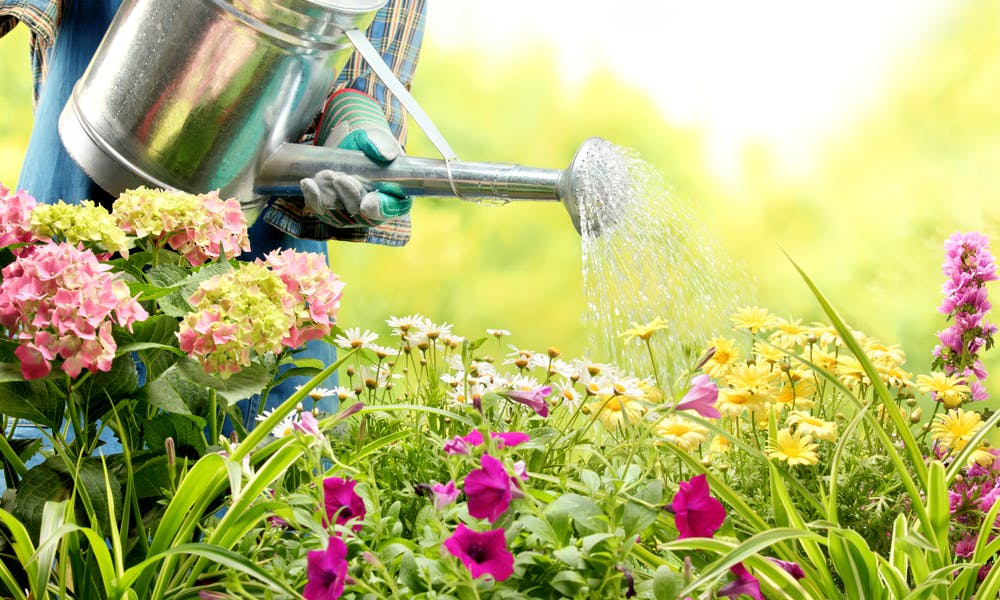MENU
Few Tips on How to Bring Your Flowers Back to Life like a Legendary Phoenix

Flowers participate in our happiness in a nice abstract way. Therefore, we should take good care of them to keep those positive vibes around. Only sometimes, it is hard, especially when we go away for a long time or we are just too busy or so tired we miss providing them what they need.
Fortunately, some plants are more robust and can last despite a lack of maintenance, like cacti. However, others require special attention. As for a human being, a dying plant needs to be rehydrated as soon as possible with appropriate care. Otherwise, it loses its brightness, amazing colors and extraordinary appearance. To achieve this goal, we have at our disposal many easy steps to follow regularly. It needs water, good soil and perfect lightning.
In this article, we are going to discuss the following points:
* How to Know That Your Plant Is Dying?
* Watering’s Role in Keeping Your Flowers Alive
* Providing the Perfect Brightness and Humidity
* How to Use Fertilizer?
* What Can You Do If Nothing Works?
How to Know That Your Plant Is Dying?
Flowers show symptoms before dying, but sometimes they may not: the leaves are wilted, the stem seems to be about to break and its color turns browner instead of soft green. Those signs could give a wrong impression because it takes little to resuscitate flowers. You need to look for signs that your plant is still alive. There is hope as long as you find few green leaves, soft stems, and buds.
Another method is to trim the affected parts, starting at the end of the stems and going down. Check the quality of the cut until you reach an area where the wood is still green. You can also examine the roots. If they are all brown or soft, they are rotten and therefore the plant is dead. On the other hand, if there are some firm, with white roots, there is hope!
Watering’s Role in Keeping Your Flowers Alive
You need to monitor your watering habits. Indeed, if you water them too much, they can appear soft and withered. More so, their leaves could be brown and yellow, which is a look suggesting that little life flows in them. To save your overwatered plant, repot it in drier soil and space out the next watering.
If, on the contrary, you do not water your flowers enough, you may notice that the edges of the leaves can be dried and ready to crumble. Their texture seems very brittle. Then, you should water it quickly. You can immerse it directly in a tank filled with water so that it wipes up as much water as possible. Another thing you can do is to put water at the bottom of your bathtub or a container; they maintain humidity and can last more than a month depending on the height of the water.
Providing the Perfect Brightness and Humidity
Each plant is unique. Not all require the same care. You must check its light requirements to find it the best place in your home or your garden. Your flower may be sporting this dull look because it is not getting enough light. Look for a safe place or curtains that block the entry of sunlight. The solution is simply moving your plant to a location more suitable for it so that it can have beneficial effects on its health and growth.
Plants absorb water through their leaves and their roots. It is, therefore, necessary to keep the plant you want to rescue in a humid place that is neither too sunny nor too dry to help it recover. Do not hesitate to test and move your plant if necessary. Gardening is not a precise science. Observe the reactions of your plant and adjust.
How to Use Fertilizer?
Feed your plant. Not just people and animals need food in your home. If a flower dies, and present discolored leaves or compromised growth, it may be because it is malnourished. Go to the garden center or nursery near you with the name of your plant and a photo of it to help you choose the right fertilizer to give it a boost. This nutritional supplement can help regulate its deficiency and promote its recovery.
You should be careful with the fertilizer as it can burn the roots. There are water-soluble formulas that release nutrients more slowly. You must add it directly to the water in your watering during the months when your plant is growing. Always be careful with over-fertilizing your plant. In addition, the use of the wrong fertilizer can burn the roots of the plant and hurt it even more.
What Can You Do If Nothing Works?
If your plant is dying, but there are still few weakly alive stems, the option of making cuttings could allow you to resuscitate your plant. Cut the parts still alive and immerse them in a glass of water or in a soaked paper towel, placed in a glass so that roots can grow. Then, when the time is right, you can replant them in the ground. There is another long technique, with no guarantees. In the worst scenario, compost it, because it still contains nutrients that can be beneficial for your plans. You can replace it with one of those plants that naturally purify the air in your home.
There are simple tips for reviving a plant. Starting from today, you do not have to throw your potted plants away again. Try to give them a second chance to flourish! Having a green thumb is not for everyone. It is very common to see the painful spectacle of a plant that seems to be slowly wasting away, without finding a solution to avoid this process.

